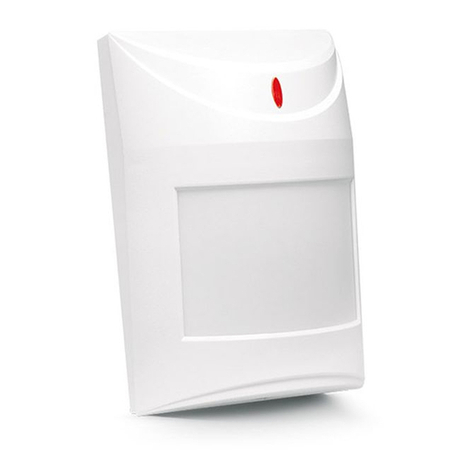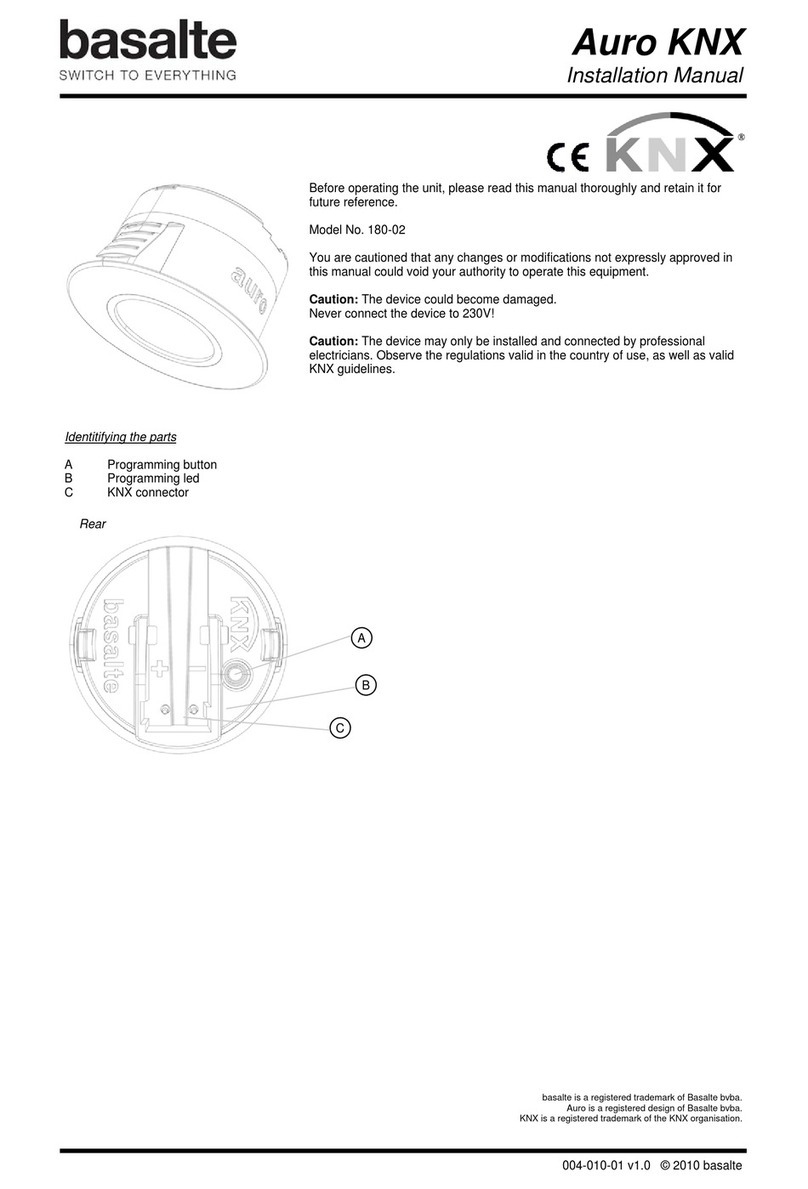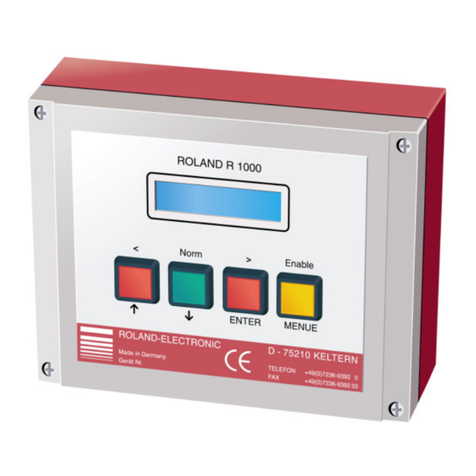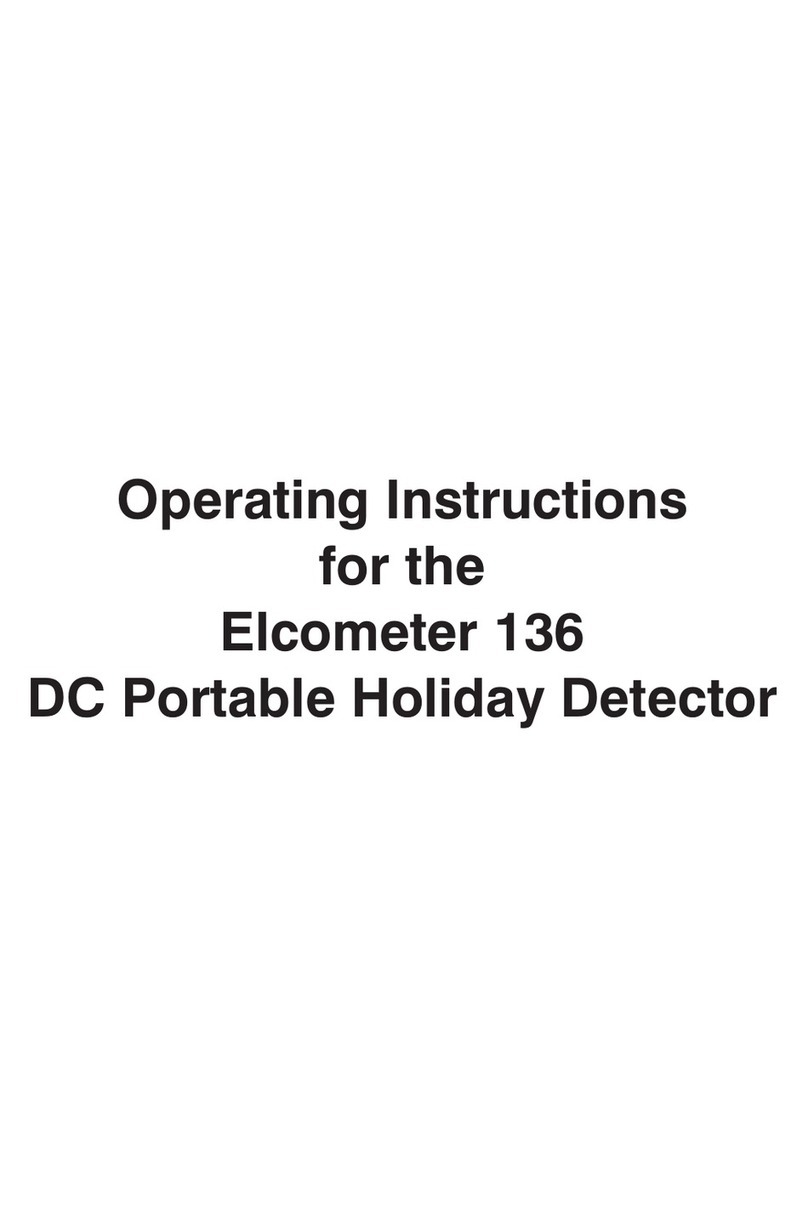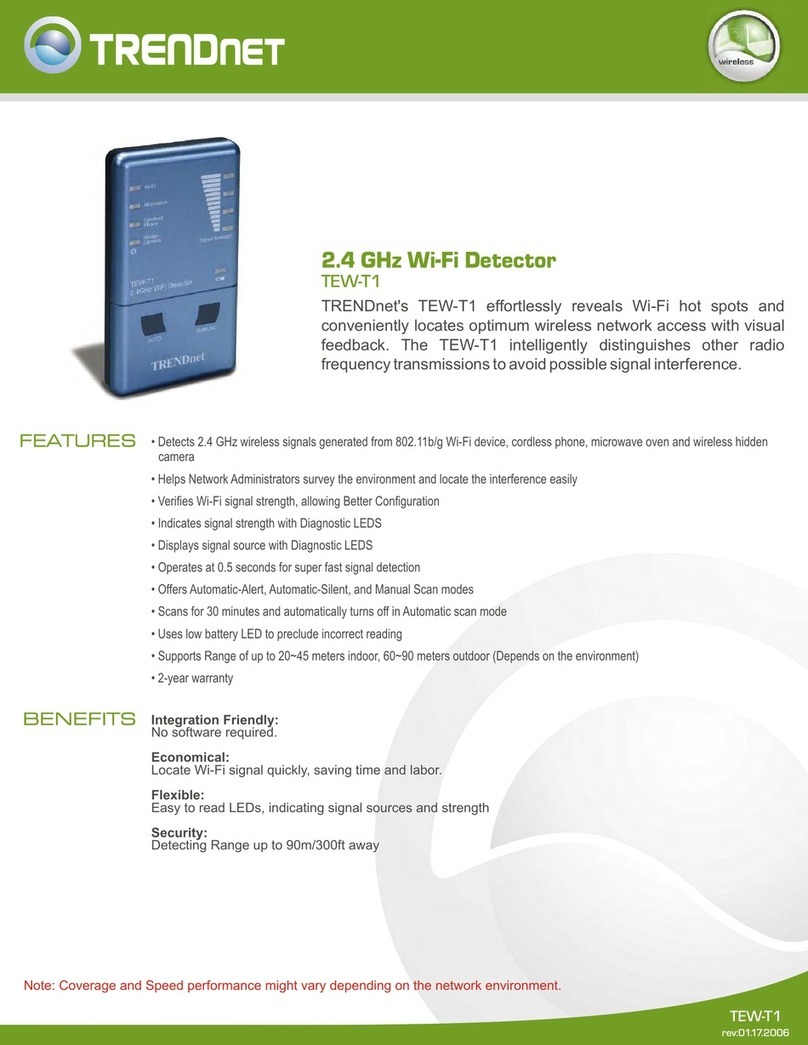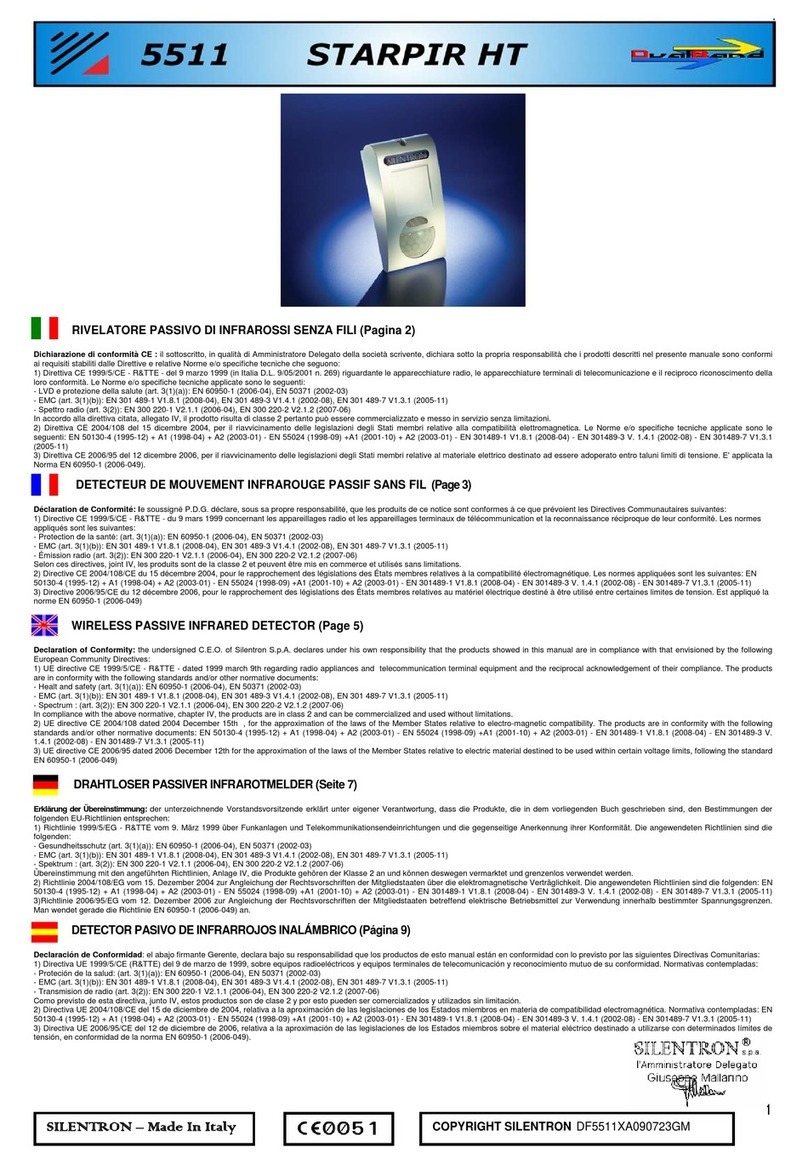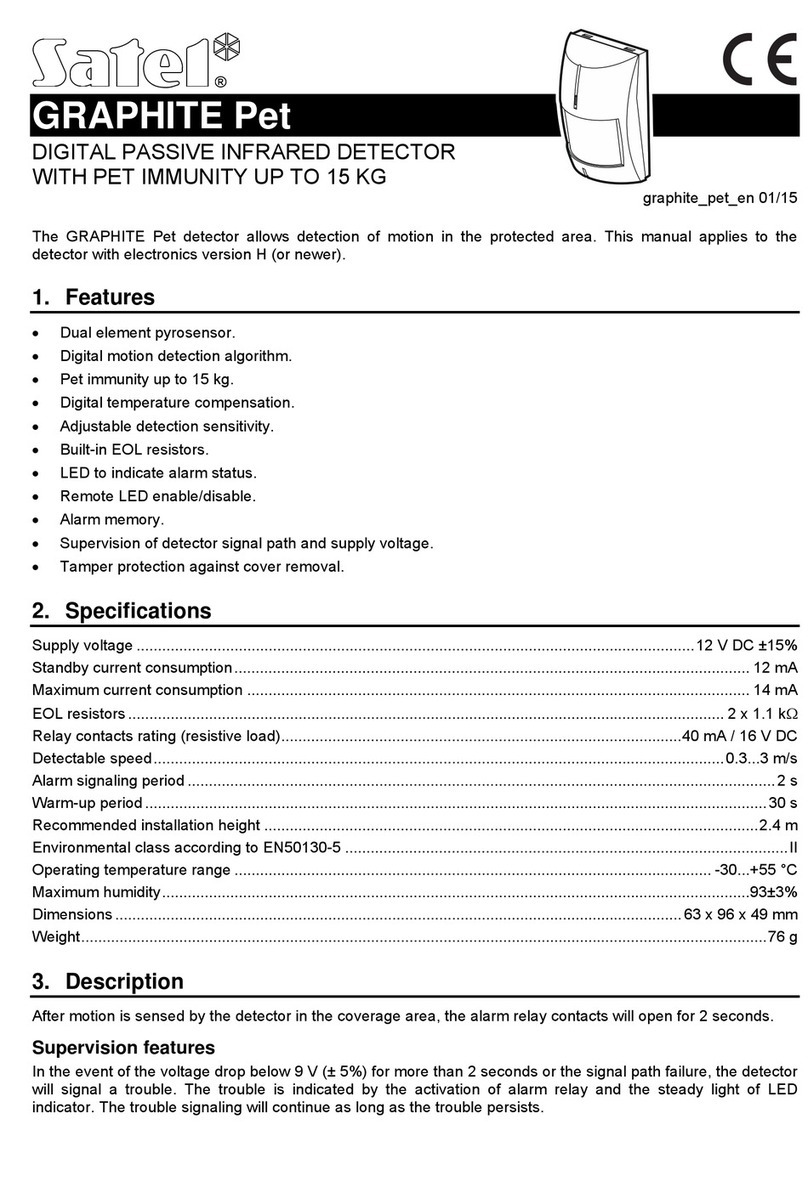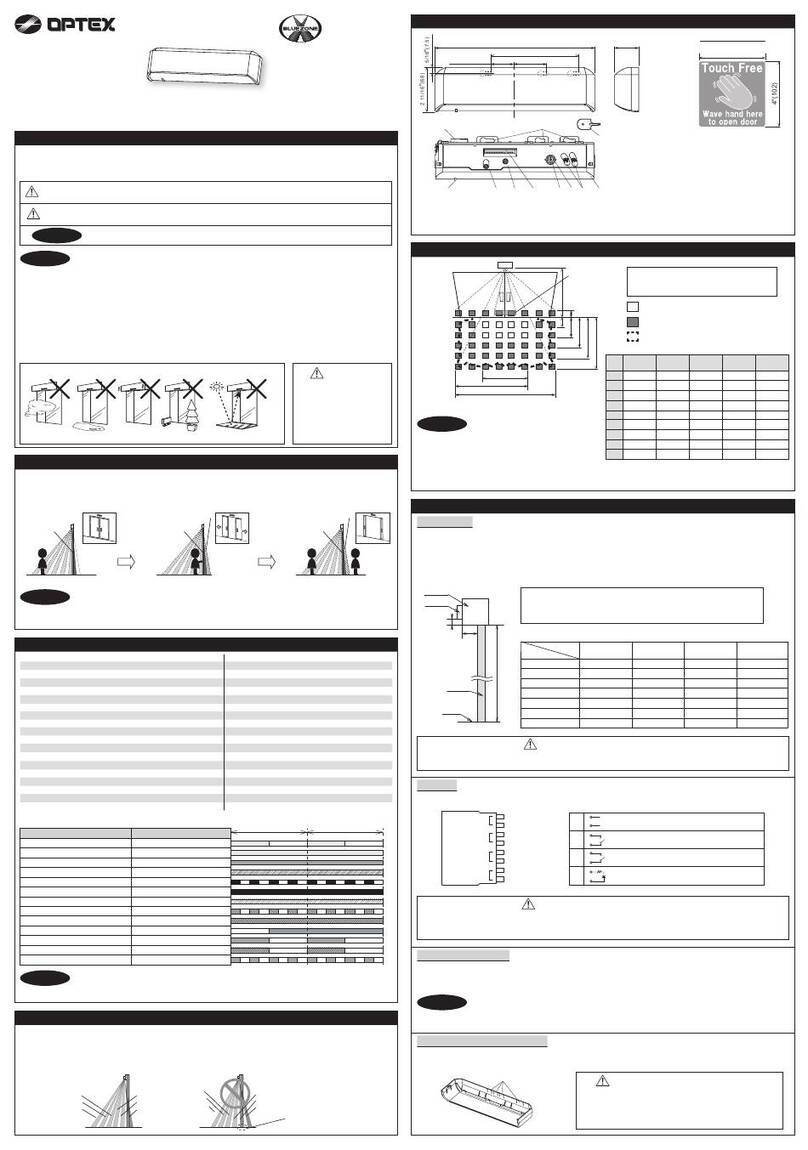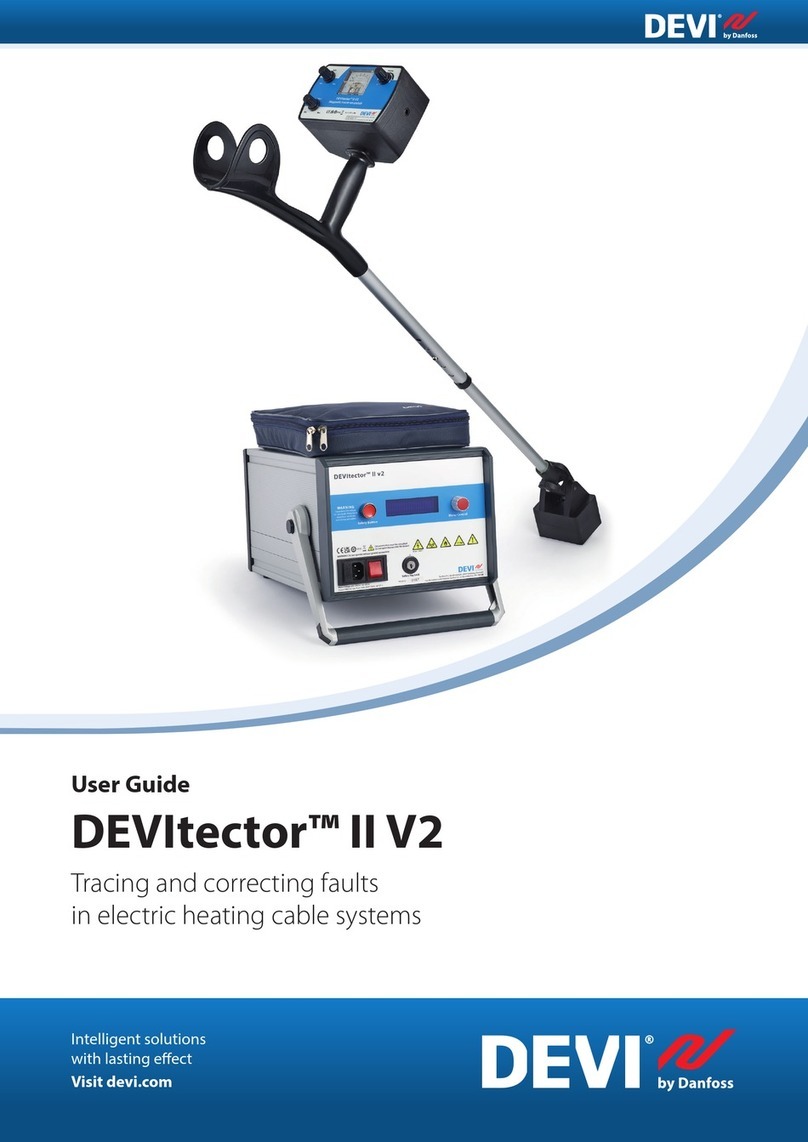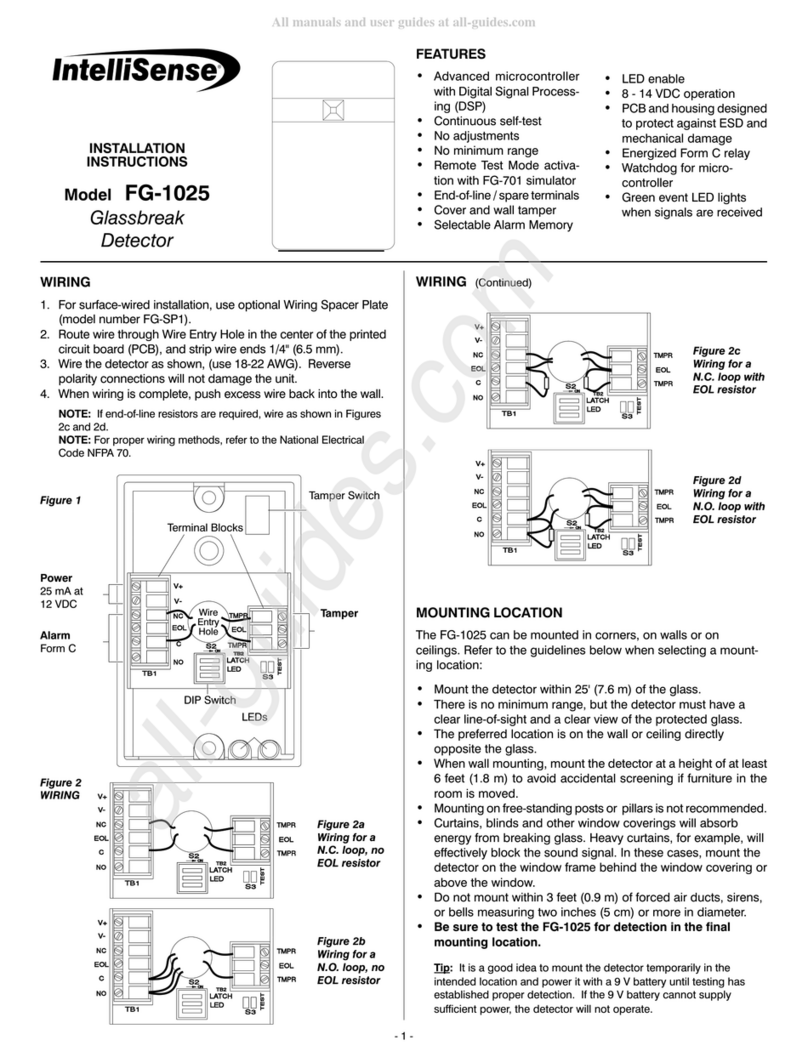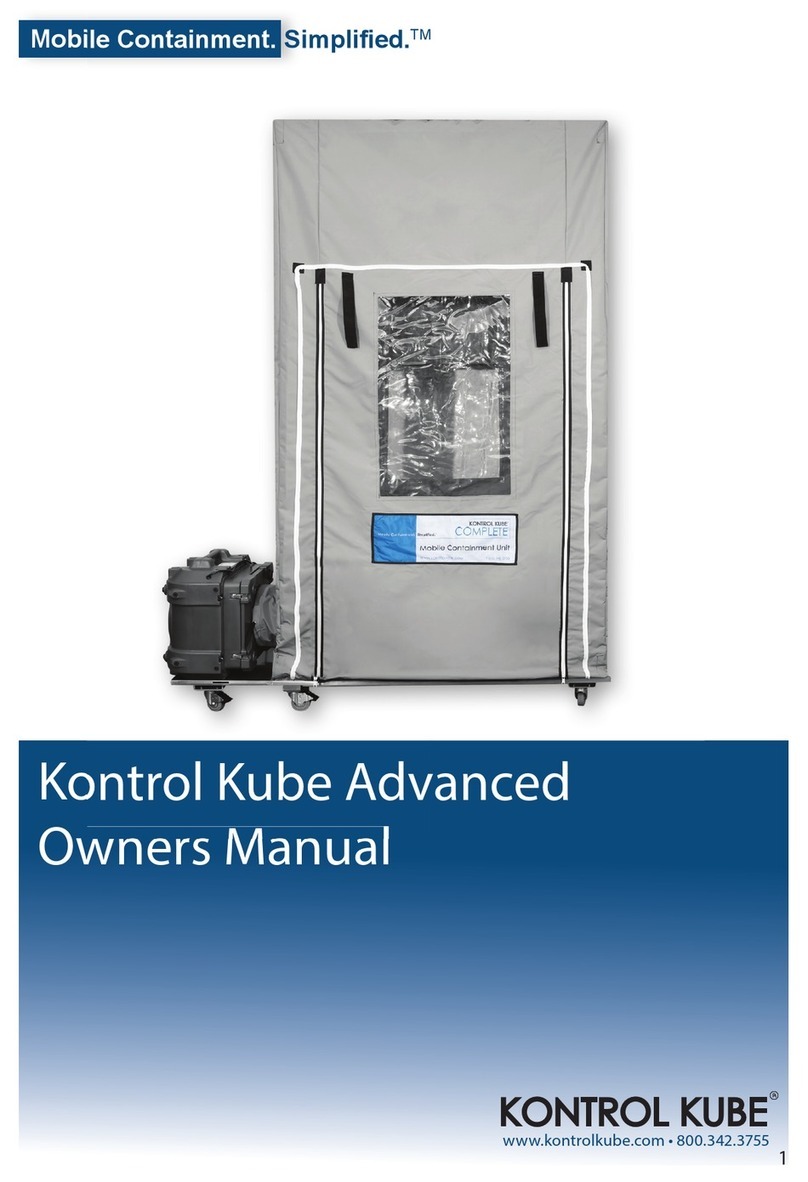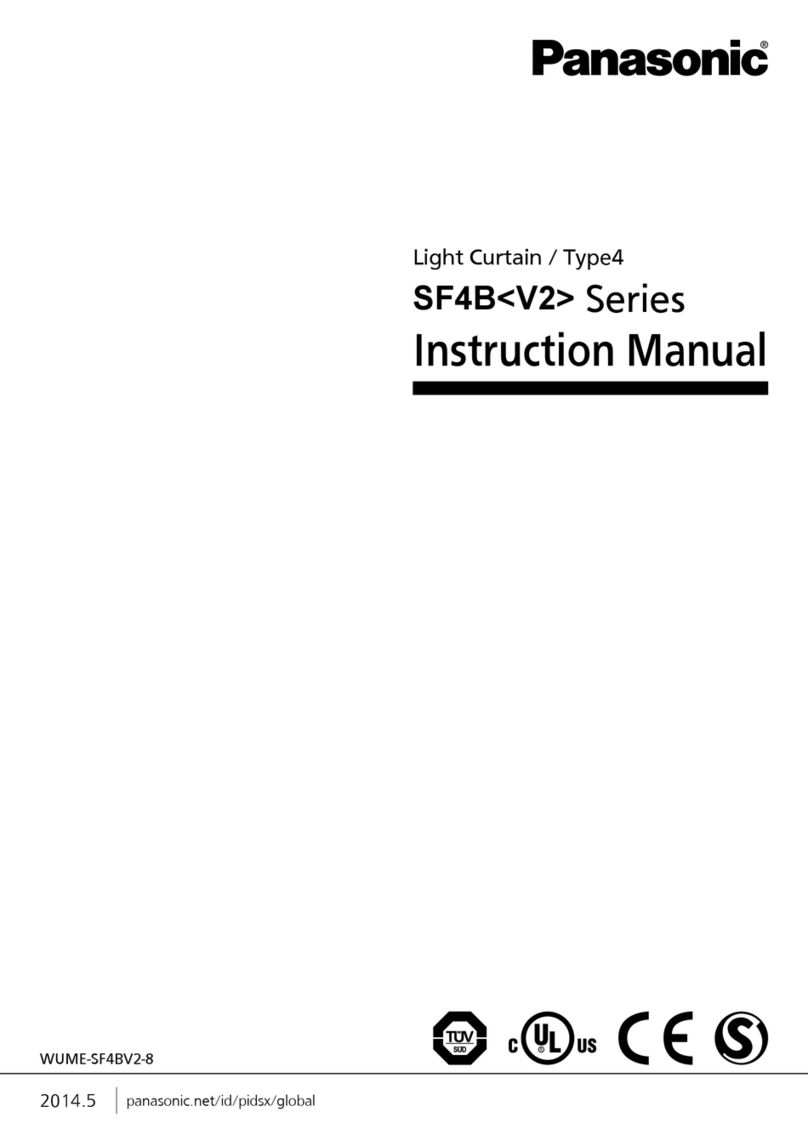General Monitors IR5500 User manual

The information and technical data disclosed in
this document may be used and disseminated
only for the purposes and to the extent specifically
authorized in writing by General Monitors.
Instruction Manual 08-16
General Monitors reserves the right to change
published specifications and designs without prior
notice.
MANIR5500
Part No. MANIR5500
Revision M/08-16
MODEL IR5500
Infrared Open Path Detector for
Hydrocarbon Gas Applications

Model IR5500
i
This page intentionally left blank

Model IR5500
ii
TABLE OF CONTENTS
MODEL IR5500..................................................................................................................................I
INFRARED OPEN PATH DETECTOR FOR HYDROCARBON GAS APPLICATIONS...............I
QUICK START GUIDE.................................................................................................................V
System Mounting.................................................................................................................................... v
Conduit Sealing ......................................................................................................................................vi
Terminal Connections............................................................................................................................vii
1.0INTRODUCTION.....................................................................................................................1
1.1Protection for Life ...................................................................................................................... 1
1.2Features and Benefits ............................................................................................................... 2
1.3Applications ............................................................................................................................... 2
1.4System Integrity Verification ...................................................................................................... 3
2.0PRODUCT DESCRIPTION.....................................................................................................4
2.1General Description................................................................................................................... 4
2.1.1Infrared Detection Principles ........................................................................................ 4
2.1.2IR5500 Detection Method............................................................................................. 4
2.1.3Measurement Scale...................................................................................................... 5
2.1.4Typical System Gas Cloud Measurements .................................................................. 6
2.1.5Control Electronics ....................................................................................................... 6
3.0INSTALLATION......................................................................................................................8
3.1Receipt of Equipment ................................................................................................................ 8
3.2Location Considerations ............................................................................................................ 8
3.3System Mounting....................................................................................................................... 9
3.4Installation................................................................................................................................ 10
3.5Conduit Sealing ....................................................................................................................... 11
3.6Terminal Connections.............................................................................................................. 11
3.6.1Terminal Block Operation ........................................................................................... 14
3.6.2Terminal Functions ..................................................................................................... 15
3.7Applying Power and Alignment................................................................................................ 16
3.7.1Start-Up Checklist....................................................................................................... 16
3.7.2Startup ........................................................................................................................ 16
3.7.3Alignment and Adjustment.......................................................................................... 17
3.7.4Response Test ........................................................................................................... 18
3.7.5Visible Light Filter ....................................................................................................... 18
3.8Operational Cautions............................................................................................................... 19
3.8.1Rapid and Massive Liquid Propane Releases............................................................ 19
3.8.2Solutions to Guard against These Situations ............................................................. 19
4.0OPERATION.........................................................................................................................21
4.1Using the IR5500 Menus ......................................................................................................... 21
4.2Menu Options .......................................................................................................................... 23
4.3Test “---”................................................................................................................................... 23

Model IR5500
iii
4.4Setup “SE” ............................................................................................................................... 23
4.5Flash Input “in”......................................................................................................................... 33
4.6Alignment/Adjustment “Pct” or “AJ” ......................................................................................... 35
4.7Log – Fault Log and Zero ........................................................................................................ 37
4.8Finish “Fi”................................................................................................................................. 39
4.9Maintenance ............................................................................................................................ 39
4.10Display and Fault Codes ......................................................................................................... 39
4.11LEL and ppm Negative Drift Faults ......................................................................................... 39
5.0TROUBLESHOOTING..........................................................................................................41
5.1Fault Codes ............................................................................................................................. 41
5.1.1F0 Excess Negative Drift............................................................................................ 42
5.1.2F1 Close to Low IR ..................................................................................................... 42
5.1.3F3 Beam Block ........................................................................................................... 43
5.1.4F4 IR Flash Timing ..................................................................................................... 43
5.1.5F5 Setup Menu ........................................................................................................... 43
5.1.6F6 Low Voltage Input at the Receiver ........................................................................ 43
5.1.7F7 Code Checksum.................................................................................................... 43
5.1.8F8 Fault during Zeroing .............................................................................................. 43
5.1.9F9 Gas Left................................................................................................................. 43
5.1.10F10 Reset Short ......................................................................................................... 43
5.1.11F11 Receiver Overheating.......................................................................................... 44
5.1.12F12 IR Flash Intensity Variation ................................................................................. 44
5.1.13F13 Non-Volatile Memory (NVM) Checksum ............................................................. 44
5.1.14F14 Analog Output for LEL-m .................................................................................... 44
5.1.15F15 Receiver Heater .................................................................................................. 44
5.1.16F16 High IR ................................................................................................................ 45
5.1.17F18 Dirty Lens ............................................................................................................ 45
5.1.18F19 Magnet ................................................................................................................ 45
5.1.19F20 Low Alignment Signal.......................................................................................... 45
5.1.20F21 Zeroing ................................................................................................................ 45
5.1.21F22 RAM Checksum .................................................................................................. 45
5.1.22F23 Hardware Revision .............................................................................................. 45
5.1.23F24 Receiver Temperature Sensor ............................................................................ 46
5.1.24F25 Analog Output for ppm-m .................................................................................... 46
5.1.25tF6 Low Voltage Input at the Source .......................................................................... 46
5.1.26tF7 Source Heater ...................................................................................................... 46
5.1.27tF8 Source Overheating ............................................................................................. 46
5.2Other Troubleshooting Tips ..................................................................................................... 46
5.2.1Source does not flash................................................................................................. 46
5.2.2Receiver does not display startup sequence when power is applied......................... 47
5.2.3Receiver displays ]-[ during alignment ....................................................................... 47
5.2.4Receiver displays F1 or F3 after alignment................................................................ 47
5.2.5Receiver does not respond to the magnet ................................................................. 47
5.2.6Receiver signal level number went to 0 with no “A” on the display ............................ 47
5.2.7Receiver displays information other than described .................................................. 47
5.2.8Source or Receiver will not move............................................................................... 47
6.0CUSTOMER SUPPORT.......................................................................................................48

Model IR5500
iv
7.0APPENDIX............................................................................................................................49
7.1Warranty .................................................................................................................................. 49
7.2Specifications........................................................................................................................... 50
7.2.1System Specifications ................................................................................................ 50
7.2.2Electrical Specification................................................................................................ 51
7.2.3Mechanical Specification ............................................................................................ 51
7.2.4Environmental Specification ....................................................................................... 52
7.2.5Approvals.................................................................................................................... 52
7.2.6Cable Requirements................................................................................................... 52
7.3Spare Parts and Accessories .................................................................................................. 53
7.3.1Spare Parts................................................................................................................. 53
7.3.2Accessories ................................................................................................................ 53
7.4Engineering Documentation .................................................................................................... 54
8.0APPENDIX A........................................................................................................................55
8.1Split-Range Analog Output Option .......................................................................................... 55
8.2Alignment Using Legacy AJ Value .......................................................................................... 56
Table of Figures
Figure 1: IR5500 Open Path Gas Detector.................................................................................. 1
Figure 2: Indoor Gas Cloud.......................................................................................................... 5
Figure 3: Outdoor Gas Cloud....................................................................................................... 5
Figure 4: Outline and Dimensional Drawing with Mounting Options............................................ 9
Figure 5: Installation onto Mounting Arm ................................................................................... 10
Table of Tables
Table 1: Readings of Methane Gas Clouds 0-5000 ppm•m Range .............................................. 6
Table 2: Readings of Methane Gas Clouds 0-5 LEL•m Range..................................................... 6
Table 3: Receiver Wiring Terminal Locations ............................................................................. 14
Table 4: Locations....................................................................................................................... 48
Table 5: Distances from Power Supply to Source and Receiver ................................................ 52
Table 6: Distances from Receiver to Analog Output Load.......................................................... 53

Model IR5500
Quick Start Guide
v
Quick Start Guide
System Mounting
The Model IR5500 units are shipped with either mounting assembly shown below. After
the mounting location has been established, mount the support arm/base. Attach a pan-tilt
assembly to each unit. Apply lithium grease on each taper joint before attaching a unit to
a support arm/base. Add the supplied bolt and washers; do not tighten until unit is fully
adjusted. If the bolt has been tightened and further adjustment is necessary, loosen the
bolt two turns and use a screwdriver between the pan-tilt assembly and arm to release the
taper.
Arm Assembl
y
with Fine Ad
j
ustments Basic Arm Assembly
Base Assembl
y
with Fine Ad
j
ustments

Model IR5500
Quick Start Guide
vi
Conduit Sealing
Each conduit run from a hazardous to a non-hazardous location should be sealed so that
gas or flames cannot pass from one electrical installation to another through the conduit
system. A conduit seal must also be installed within 18 inches of the Source and Receiver
enclosure if installed in a Division 1 location. A conduit seal may not be required if installed
in a Division 2 location.
General Monitors requires the use of a drain loop or conduit seal in the conduit to prevent
moisture from entering the unit housing. For installation in a Division 2 location using
Division 2 wiring methods, a drain loop or conduit seal may not be required. Consult
Article 501 of the NEC for details.
WARNING: The conduit entries should be sealed per the NEC 501.15 or Canadian
Electrical Code Handbook (Part 1, Section 18-154) for Division 1
installations.
WARNING: Unused cable entry holes must be sealed with an approved explosion-proof
stopping plug.
CAUTION: Acetic acid will damage metal components, hardware, and other
components. If damage results from the use of a sealant that outgases
acetic acid such as a room temperature vulcanizing sealant (RTV), the two-
year warranty will be void.
CAUTION: Consult the manufacturer for dimensional information on the flameproof
joints for repair.

Model IR5500
Quick Start Guide
vii
Terminal Connections
To make the wiring connections to the Model IR5500, loosen the retaining screw on the
cover of each unit using the supplied hex wrench and unscrew the rear cover. All output
connections are made inside the housing (see figures on following page for terminal block
locations). Recommended stripping length is 4/10” (10 mm) for push terminals, ½” (11
mm) for screw terminals.
NOTE:Contact with printed circuit board (PCB) components should be avoided to
prevent damage by static electricity.

Model IR5500
Quick Start Guide
viii
9 10 11 12 13 14 15 16
+24V
COM
0-20mA L
COM
0-20mA P
COM
RST
COM
8 MOD1- Modbus1- Modbus2- MOD2-
17
7 MOD1+ Modbus1+ Modbus2+ MOD2+
18
Normally
De-
energized
Normally
Energized Normally
Energized
Normally
De-
energized
6 A2 Alarm NO Alarm NC Fault NO Fault NO FLT1 19
5 AC Alarm C Alarm C Fault C Fault C FLTC 20
4 A1 Alarm NC Alarm NO Fault NC Fault NC FLT2 21
3 W2 L Warn
LEL•m NO Warn
LEL•m NC Warn
ppm•m NC Warn
ppm•m NO W2 P 22
2 WC L Warn
LEL•m C Warn
LEL•m C Warn
ppm•m C Warn
ppm•m C WC P 23
1 W1 L Warn
LEL•m NC Warn
LEL•m NO Warn
ppm•m NO Warn
ppm•m NC W1 P 24
Receiver Wiring Terminal Locations

Model IR5500
Quick Start Guide
ix
Terminal Block Operation
To connect wiring to the terminal block, insert a screwdriver into the orange tab and
press down, opening the terminal (see figure below). Insert the wire into the terminal
and release the orange tab, clamping the wire in the terminal. Check the clamp by
GENTLY tugging the wire to ensure it is locked in. Make sure that the terminal clamps
on to the wire, not the insulation.
Terminal Block Operation Diagram
The push terminal block is designed to accept 24 AWG to 16 AWG (0.2 mm
2
to 1.5 mm
2
)
stranded or solid-wire. The optional screw terminal block accepts 26 AWG to 14 AWG
(0.14 mm
2
to 2.5 mm
2
) wire.
Primary DC voltage power must be provided by the customer. Since the Model IR5500
Infrared Open Path System is designed to continuously monitor for leaks of combustible
gas, a power switch is not included to prevent accidental system shutdown. Power must
remain disconnected until all other wiring connections are made.

Model IR5500
Quick Start Guide
x
Startup
Before applying power to the system for the first time, all wiring connections should be
checked and the housing cover securely fastened.
Display Sequence on Power Up
Display Duration (s)
0 0 0 1
8.8.8. (Test all segments) 2
blank 3
Software revision letter 2
SU (Start Up) 120
0 (Gas Concentration) Continuous
The IR5500 contains a heater circuit to remove condensation from the windows. The unit
should be allowed to stabilize for approximately two hours before continuing with the
setup mode.
The resolution of the display is the either 0.1 LEL•m or 100 ppm•m. Since HART,
Modbus, and 4-20 mA outputs have more resolution, the least significant digit of the
displayed value might not agree with that of other outputs due to rounding error.

Model IR5500
Quick Start Guide
xi
Alignment/Adjustment
Ensure that there is no significant amount of background gas when the unit is setting the
zero value, as this will alter the Model IR5500’s performance. If there is gas present, try
setting-up the IR5500 on a breezy day, as this dissipates the gas.
Alignment Outline
Verify that the beam path is clear of all obstruction and that unit optics are clean.
Adjust units for maximum signal.
Adjust the Source first, then the Receiver.
Adjust pan first, then tilt.
Make sure that mounting screws are fully tightened.
Make sure that the Receiver displays 0C to complete alignment.
1. It is recommended that two people are involved in alignment. One person should be at
the Source and one person should be at the Receiver. An alignment scope is helpful
but not necessary.
2. At the Receiver, check the four M6 screws that hold the unit to the pan-tilt assembly.
Ensure that a small amount of anti-seize lubricant (p/n 2421) has been applied to the

Model IR5500
Quick Start Guide
xii
first few threads of each M6 screw. A packet of lubricant is included with the pan/tilt
assembly. Without lubricant, alignment will be more difficult, and bolts may seize.
Verify that the back two screws have been hand-tightened but that the front two have
not. Hand-tighten the 24 mm nut for the pan-tilt assembly. On the assembly, verify
that the front and back fine adjust screws are flush with the assembly surface, to allow
full movement of tilt. If necessary, use a 2.5 mm hex wrench to adjust the screws.
Align the notch and pin of the sights with the Source center.
3. At the Source, adjust the Source pan (side-to-side) for maximum signal level. Slowly
tighten the 24 mm nut at the bottom of the pan-tilt assembly while holding the left side
of the Source. Verify that the signal level is reduced by 10% or less.
4. At the Source, check the four M6 screws that hold the unit to the pan-tilt assembly.
Verify that the back two screws have been hand-tightened but that the front two have
not. On the pan-tilt assembly, verify that the front and back fine adjust screws are
flush with the assembly surface. Use the housing sights to aim the unit at the center of
the Source. Verify that the Receiver display is 0. If the Receiver does not have
adequate signal from the Source, it may be in fault, depending on fault delay settings.
Put the magnet on the upper right edge of the display over the GM logo. The display
will change from 0 to rst, ---, SE, in, and Pct or AJ. To align the system using AJ, refer
to the Appendix. To align the system using Pct, remove the magnet when Pct
appears. Apply the magnet when Pth appears. Select the units for the path length,
enter the path length (LEn), and whether or not there is an attenuator on the Source
(nAt/At, for 5-30m range systems only), whether or not there is a visible light filter on
the Source (nLF/LF), and Fi to finish the Pth menu. The path length entered (LEn)
should be accurate to within ±5% of the actual distance. The Receiver will display a
number that is a percent of expected signal level. Aim for 100 percent or higher. The
minimum acceptable percent is 80. Below 50, the alignment fault F20 will be set.
5. At the Source, lightly tighten the front fine adjust screw until it bottoms out against the
internal tilt lever. Slowly make a small turn to tighten the screw and lower the front of
the Source. Wait a few seconds for the signal level number at the Receiver to settle.
Continue making small turns, waiting after each turn for the signal level number to
settle. Once the signal level number begins to decline, back out the front fine adjust
screw until it is flush with the assembly surface. Lightly tighten the back fine adjust
screw until it bottoms out, and then slowly make a small turn to further tighten it. Wait
a few seconds for the signal level number to settle. Continue until the signal level
reaches its maximum and begins to decline. Back out the back fine adjust screw.
6. Secure all four M6 mounting screws, tightening them gradually and alternately in a
crisscross pattern to minimize change in alignment. Verify that signal level is reduced
by 10% or less (increase of any amount is acceptable). To complete alignment, all
four M6 mounting screws and the 24 mm nut of the pan/tilt assembly must be
fully tightened and secure.
7. With the Source secure, repeat steps 3 through 6 for the Receiver. The Pct should be
at least 80 percent. Aim for 100 percent or higher.
8. Once adjusts are done and the signal level has been maximized, put the magnet on
the upper right edge of the display to exit alignment mode. The unit will display a
flashing AC and begin zeroing the gas reading. Once zeroing is complete, the unit will
display 0C, followed by the gas concentration. To complete alignment, 0C must be
displayed. With all screws secured on both units, once 0C is displayed, system
alignment is complete.

Model IR5500
Quick Start Guide
xiii
Response Test
After initial alignment, a test of the IR5500 should be carried out using the test gas films
for methane or propane (part numbers 329083 or 329084, respectively). Follow the
instructions listed on the films.

Model IR5500
1
1.0 Introduction
1.1 Protection for Life
General Monitors’ mission is to benefit society by providing solutions through
industry leading safety products, services, and systems that save lives and protect
capital resources from the dangers of hazardous flames, gases, and vapors.
This manual provides instruction for installing and operating General Monitors’
Model IR5500 for combustible gas detection. It should be read in full and the
information contained herein understood before attempting to place the system in
service.
The safety products you have purchased should be handled carefully and installed,
calibrated, and maintained in accordance with the respective product instruction
manual. Remember these products are for your safety.
Special Warnings
The Model IR5500 Infrared Open Path System contains components which can be
damaged by static electricity. Special care must be taken when wiring the system
to ensure that only the connection points are touched.
WARNING: Toxic, combustible, and flammable gases and vapors are dangerous.
Extreme caution should be used when these hazards are present.
Do not open when an explosive atmosphere is present.
Potential electrostatic charging hazard. Use only a damp cloth for
cleaning.
CAUTION: Read and understand this instruction manual before operating or
servicing the equipment.
Seal all conduits within 18 inches of enclosure.
Use wire suitable for 16°C above ambient for the Receiver and 32°C
above ambient for the Source.
Figure 1: IR5500 Open Path Gas Detector

Model IR5500
2
1.2 Features and Benefits
The advantageous features and benefits of the Model IR5500 Infrared Open Path
System include:
Performance certified: only open path detector to meet multiple agency
performance requirements on both the LEL•meter and ppm•meter scales.
Single detection beam: eliminates drift and false alarms.
Parts-per-million accuracy: sensitive to low-level leaks.
Unitized design - digital readout, 4 relays and two 4 to 20 mA outputs:
wide variety of outputs.
Type 4X, IP66/IP67 weatherproof rating: highly durable unit.
Fail-to-safe operation: alerts user to fault in operation.
Automatic gain control: compensates for dirty optics, rain, and fog.
Power supply input reversal protection: protection against miswiring
damage.
Dirty Window delay and Beam Block delay: reduces maintenance and
false alarms.
1.3 Applications
This is a partial list of applications suitable for the Model IR5500 Infrared Open
Path System:
Compressor stations
Drilling and production platforms
Fence line monitoring
Fuel loading facilities
Gas turbines
LNG/LPG processing and storage facilities
Petrochemical plants
Tank farms
Wastewater treatment

Model IR5500
3
1.4 System Integrity Verification
Commissioning Safety Systems
Before power up, verify wiring, terminal connections and stability of mounting for all
integral safety equipment including, but not limited to:
Power supplies
Control modules
Field detection devices
Signaling or output devices
Accessories connected to field and signaling devices
After the initial application of power and any factory specified warm-up period to the
safety system, verify that all signal outputs to and from devices and modules, are
within the manufacturers’ specifications. Initial alignment, alignment checking, and
testing should be performed according to the manufacturers’ recommendations and
instructions.
Proper system operation should be verified by performing a full, functional test of
all component devices of the safety system, ensuring that the proper levels of
alarming occur. Fault detection should be verified.
Periodic Testing of Field Devices
Periodic testing or alignment should be performed per the manufacturers’
recommendations and instructions. Testing and alignment procedures should
include, but not be limited to:
Verify zero reading
Verify gas reading by applying a Test Gas Film
Verify integrity of all optical surfaces and devices
When testing produces results outside of the manufacturers’ specifications, repair,
or replacement of the suspect device(s) should be performed as necessary. Test
intervals should be independently established through a documented procedure,
including a verification log maintained by plant personnel or third party testing
services.
Periodic System Verification
The following system verifications should be performed at least annually:
Wiring, terminal connections and stability of mounting
Proper system operation verified by performing a full, functional test
of all component devices of the safety system, ensuring that the
proper levels of alarming occur
Fault circuit operation

Model IR5500
4
2.0 Product Description
2.1 General Description
The Model IR5500 Infrared Open Path System is a hydrocarbon gas detector
(Figure 1). The system consists of a Source and a Receiver. Both units are
calibrated at the factory and need no further alignment. The operation of the Model
IR5500 can be checked by placing a Test Gas Film in front of the Receiver. The
system requires only a periodic cleaning of the windows to assure dependable
performance, and is recommended prior to zero check, test gas, and optical
integrity testing. The Model IR5500 Infrared Open Path System continuously
monitors hydrocarbon gases. The gas detection range of a Receiver calibrated for
methane is 0 to 5,000 ppm•m and 0 to 5 LEL•m while that for propane it is 0 to
2,000 ppm•m and 0 to 1 LEL•m. The Receiver provides two 4 to 20 mA analog
signals, one proportional to ppm•m and the other to LEL•m. Alarm and Fault
relays, split range (A/O-ppm), Modbus, and HART outputs are optional.
The Model IR5500 Infrared Open Path System is easily aligned using the digital
display and adjustable mounting arms, therefore does not require any bulky setup
equipment such as digital volt meters and handheld alignment aids. For setups that
require the distance from the Source to the Receiver to be greater than 100
meters, General Monitors offers an optical alignment scope that makes the initial
alignment easier.
Prior revisions of the product were marked as the Ultima OPIR-5 Detector.
2.1.1 Infrared Detection Principles
Most gases absorb infrared radiation. Hydrocarbon gases absorb infrared radiation
at specific wavelengths but with different degrees of absorption. Absorption of the
radiation follows the Beer-Lambert Law, which states that the transmittance (T) of
radiation through an absorbing medium decreases exponentially by the product of
the absorption coefficient (A), the concentration (C), and the path length (L):
T = T0 exp(-ACL)
Here T0is the transmittance of light containing no absorbing medium.
2.1.2 IR5500 Detection Method
The Model IR5500 uses a single beam, dual wavelength method of infrared
absorption detection. The gas absorbs one wavelength but not the other, which is
the reference wavelength. By comparing the signals from these two wavelengths,
the detector measures gas concentration. The reference wavelength is chosen to
compensate for interferences that can otherwise occur from atmospheric variation,
such as humidity, rain, dust, snow, fog, steam, and temperature. This method of
detection comes under what is commonly known as the non-dispersive infrared
(NDIR) absorption principle.

Model IR5500
5
No Wind
NOTE: Extremely dense fog, steam or interruption of the beam by an object or
person may cause a system fault
2.1.3 Measurement Scale
With the Model IR5500 Open Path System, as there is no fixed path length, the
reading is reported in concentration•meter. The Model IR5500 reports
concentrations in the ppm•m range (highly sensitive to low levels of hydrocarbons)
and the LEL•m range (large hazardous levels of hydrocarbons). The Model IR5500
display is auto-ranging. In general, an open path monitor can give similar
responses to large, low concentration gas clouds and small, high concentration gas
clouds as shown below. The Alarm setpoint should be equal to or less than the
reading for a gas concentration of 60% LEL at the target gas cloud length.
Typical gas cloud configuration:
Figure 2: Indoor Gas Cloud
Figure 3: Outdoor Gas Cloud

Model IR5500
6
2.1.4 Typical System Gas Cloud Measurements
Example readings of methane gas clouds by the standard Model IR5500 are:
Size of Gas Cloud IR5500 Display
(ppm•m)
50 ppm x 2 meters 100
25 ppm x 4 meters 100
10 ppm x 10 meters 100
100 ppm x 5 meters 500
50 ppm x 10 meters 500
500 ppm x 5 meters 2500
100 ppm x 25 meters 2500
5% LEL x 1 meter 2500
1% LEL x 5 meters 2500
.5% LEL x 10 meters 2500
Table 1: Readings of Methane Gas Clouds 0-5000 ppm•m Range
Size of Gas Cloud IR5500 Display
(LEL•m)
20% LEL x 1 meter 0.2
10% LEL x 2 meters 0.2
100% LEL x 2½ meters 2.5
50% LEL x 5 meters 2.5
100% LEL x 1 meter 1.0
50% LEL x 2 meters 1.0
25% LEL x 4 meters 1.0
10% LEL x 10 meters 1.0
Table 2: Readings of Methane Gas Clouds 0-5 LEL•m Range
2.1.5 Control Electronics
Both the Model IR5500 Source and Receiver units operate from a 24 VDC input. This
unregulated 24 VDC is fed to on-board power supplies that produce all necessary voltages
for the Model IR5500 Source and Receiver.
Other manuals for IR5500
1
Table of contents
Other General Monitors Security Sensor manuals

General Monitors
General Monitors TS4000 User manual

General Monitors
General Monitors IR5500 Operating instructions

General Monitors
General Monitors FL4000 User manual
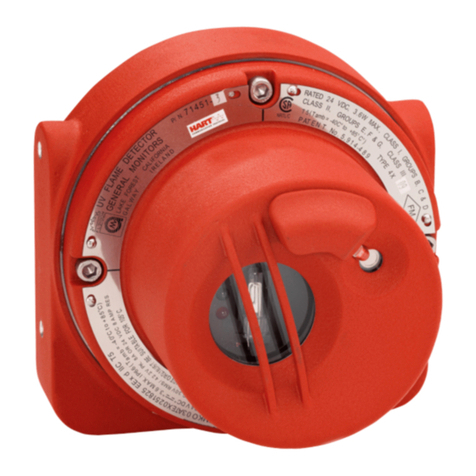
General Monitors
General Monitors FL3100 User manual

General Monitors
General Monitors IR400 User manual
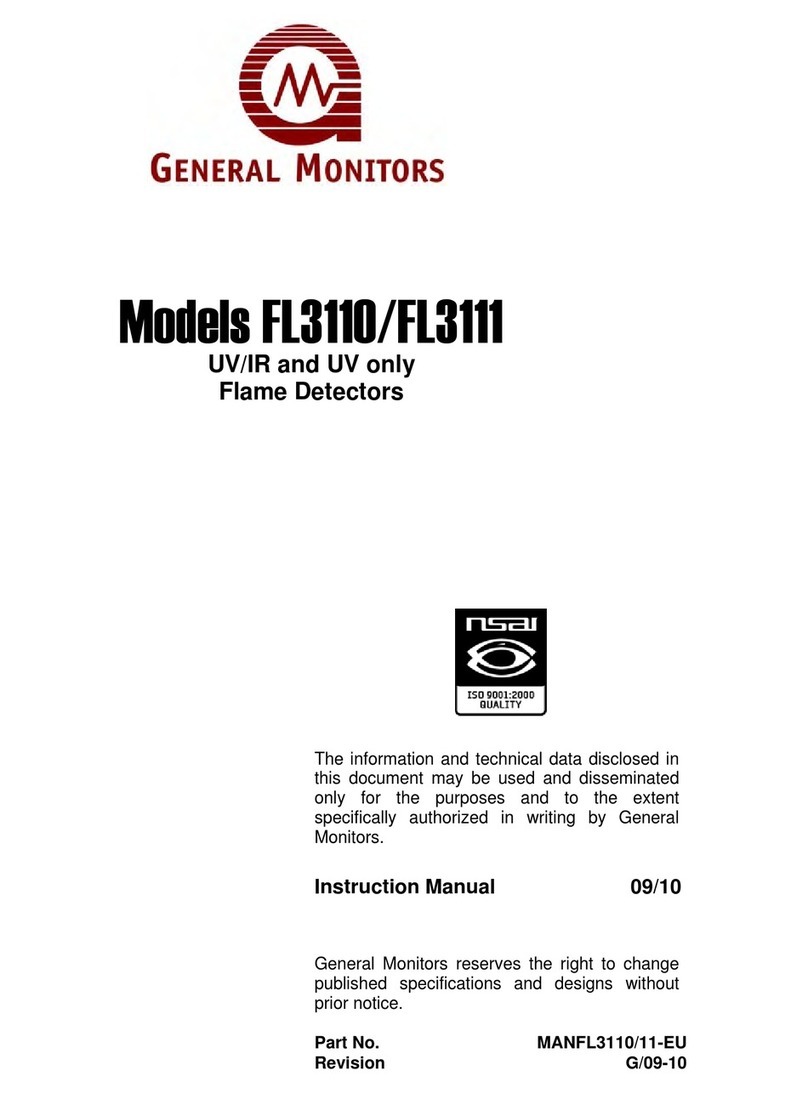
General Monitors
General Monitors FL3110 User manual
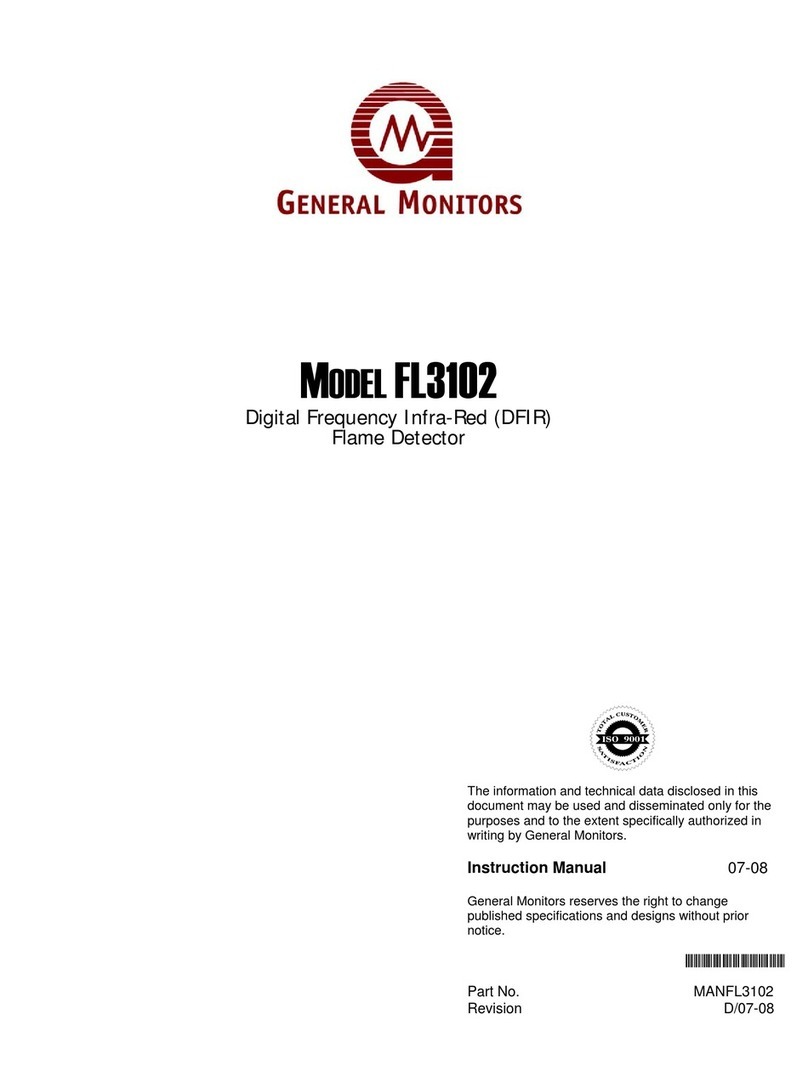
General Monitors
General Monitors FL3102 User manual
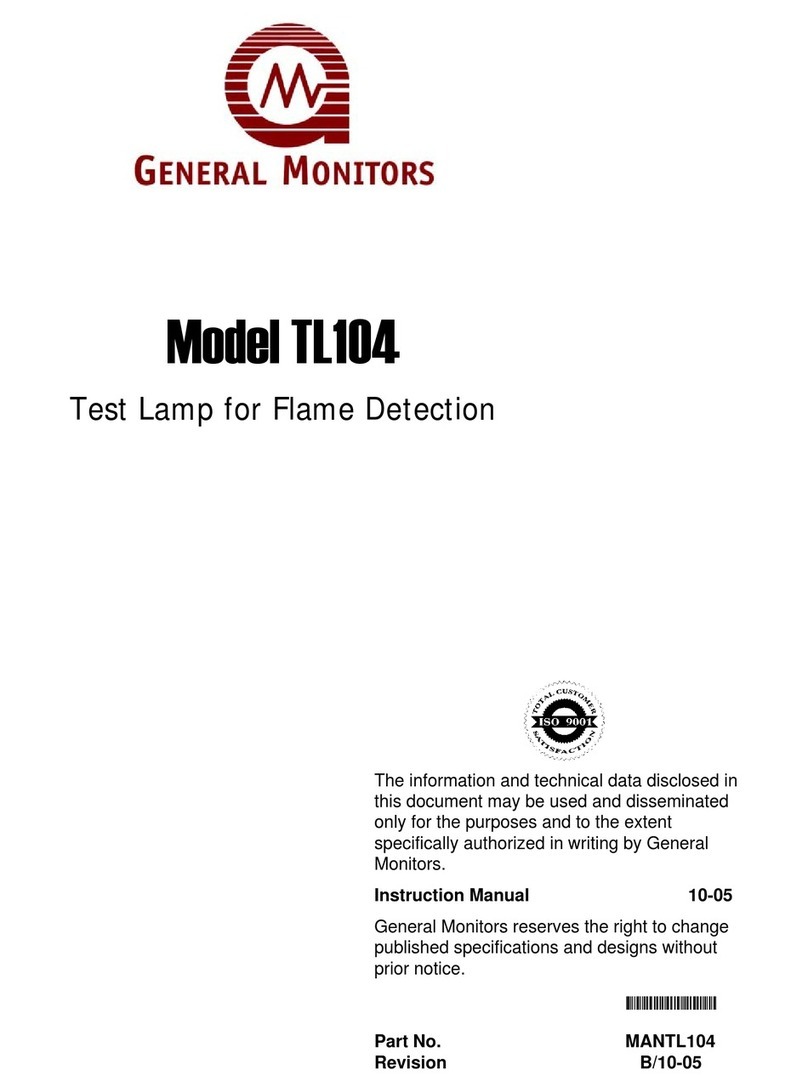
General Monitors
General Monitors TL104 User manual
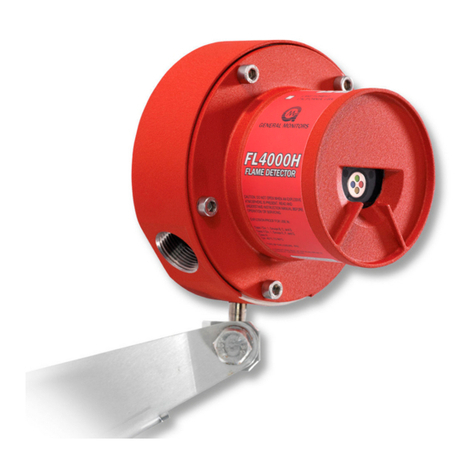
General Monitors
General Monitors FL4000H User manual
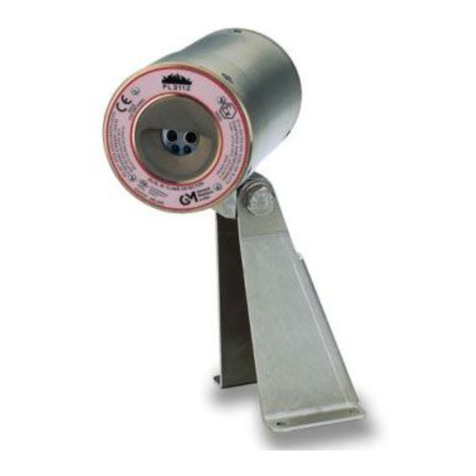
General Monitors
General Monitors FL3112 User manual
